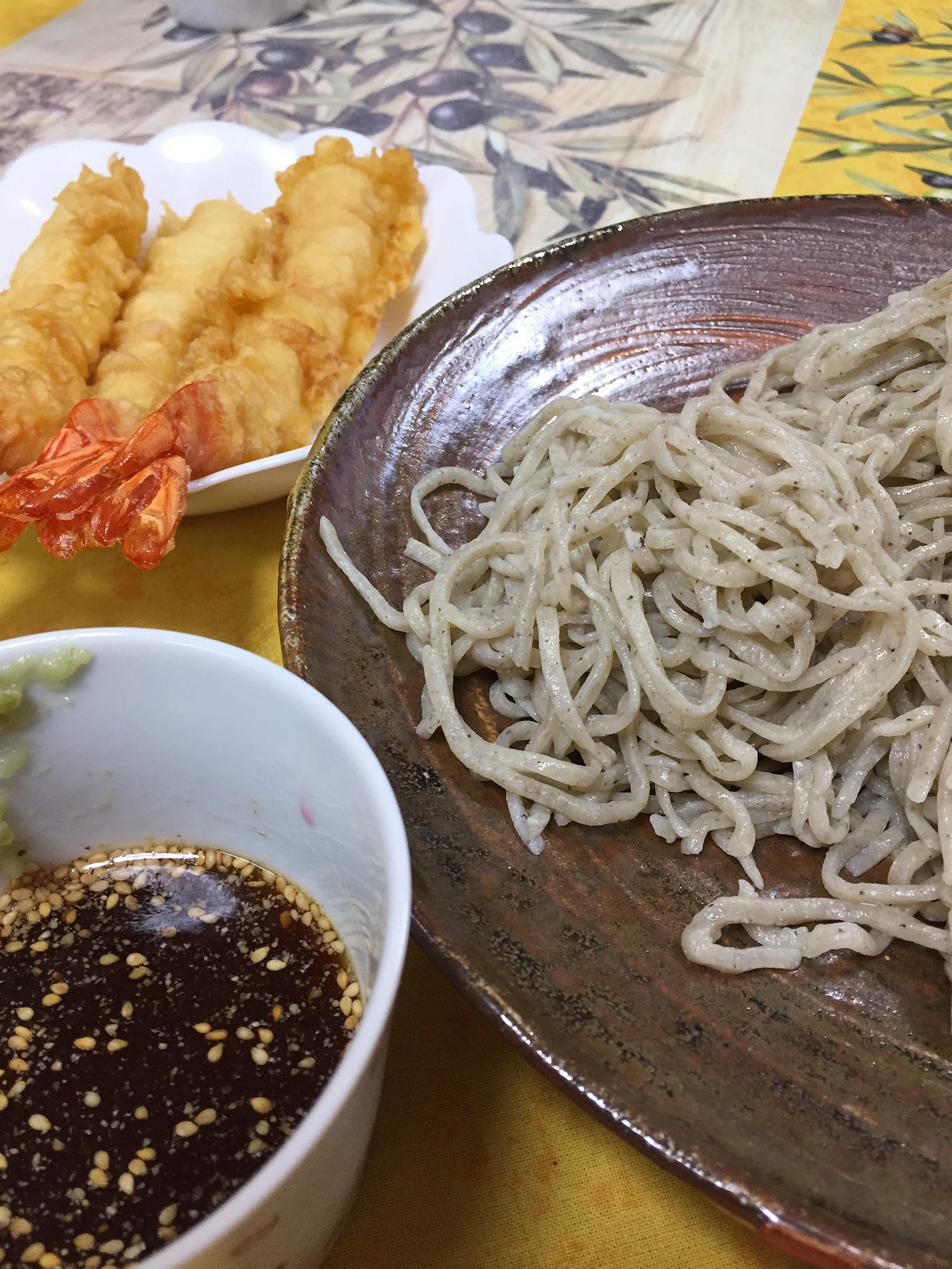It has been nearly two months since I started this newsletter “Japan A to Z”. I just didn’t think I could go this far and my 10th one is just around the corner. I hope I will be able to continue with interesting and most updated information. When it comes cooking, I am not a good cook, but I do cook, and I am in charge of preparing any kind of noodles in my family. In Japan, we have a variety of choice of noodles such as soba, udon, ramen and of course spaghetti. In this newsletter I will focus on Soba=Buckwheat noodle and I hope you realize the beauty of soba and try when you visit Japan.
History of Soba in Japan is very old and it goes back to as old as 9,000 years ago. Soba wasn’t eaten in a form of noodle at the beginning. It was boiled and eaten like rice milk. Around 1,000 years ago, soba was not a food for rich people, but for poor people and was used for emergency food in a way.
Soba can be grown in a poor land and grow faster than other crops such as rice and wheat. Considering the fact that Japan is a mountainous country and majority of lands were not rich enough to grow major crops. Soba can be said “fast food” which can be harvested 70 to 80 days and it is possible to harvest three times in a year.

Diversification of modern life changed the status of soba and it became popular Japanese food and even one of choices for serious dieters. When we put soba from the travelers’ perspectives, it should be included as “must try” food when visiting Japan. I will categorize how to enjoy soba in order to simplify. The following list is from the top end of cooking yourself.
Soba Kaiseki: This is “soba version” of tea‐ceremony dishes. It is very expensive and normally is served in a luxurious private room. It costs at least 10,000 yen for a person.
Soba Restaurant: This can be found each town and lots of them have delivery services. Bowl dishes like katsu-don and ten-don are served at the restaurant. It normally cost 1,000 yen for soba and a small rice bowl. This link is one of my favorite soba restaurant.(Sorry Japanese only)
Stand-up-eating soba shop: This can be found at most of railway terminal stations and even at some of platforms of the stations. Japanese businesspersons use them for filling their stomachs quickly. Soba can be served straight away and finish in ten minutes. With 500 yen you can fill your stomach fairly well. One of the biggest chain in Tokyo area is Komoro-soba and they are reasonable and good.(Sorry Japanese only)
Cooking yourself: It is easier way to enjoy a variety of soba and cheaper. In the supermarket you will find lots of dried soba and noodle soup.
When you buy noodle soup, please be careful. There are two different kinds. One is “straight type” which you don’t have to add water and another one is you have to add a certain portion of water. I would recommend the straight type which is easier, and you don’t fail. If you have a kitchen and 500 yen, you will enjoy a variety of soba.
When you are at the supermarket, you will have no crew to choose. In that case go for “Nihachi Soba” which stands for soba made with two parts wheat flour to eight parts buckwheat flour. It is not the cheapest but has a good combination of buckwheat and wheat.
When you cook, after boiling soba noodle doesn’t throw away hot water left in a pot. Remaining hot water is called “soba-yu” and can be used to finish soba soup. Add soba-you to soba soup on your choice, you can enjoy soba twice. The extract has lots of good ingredients.
Additionally, this is my favorite thing as a drinker. Prepare “shochu” which has different kinds, and mix with soba-yu. Drink it before it gets cold. A mixture of the smell of shochu and soba-yu will give you another advantage of cooking yourself. When you make it, prepare soba-yu first and then pour shochu after.
While you are staying in Japan, you will have a great chance of tasting and even cooking soba. Eating soba is an entirely different experience from those of noodle in the west. I will guarantee that you will never regret trying them.







